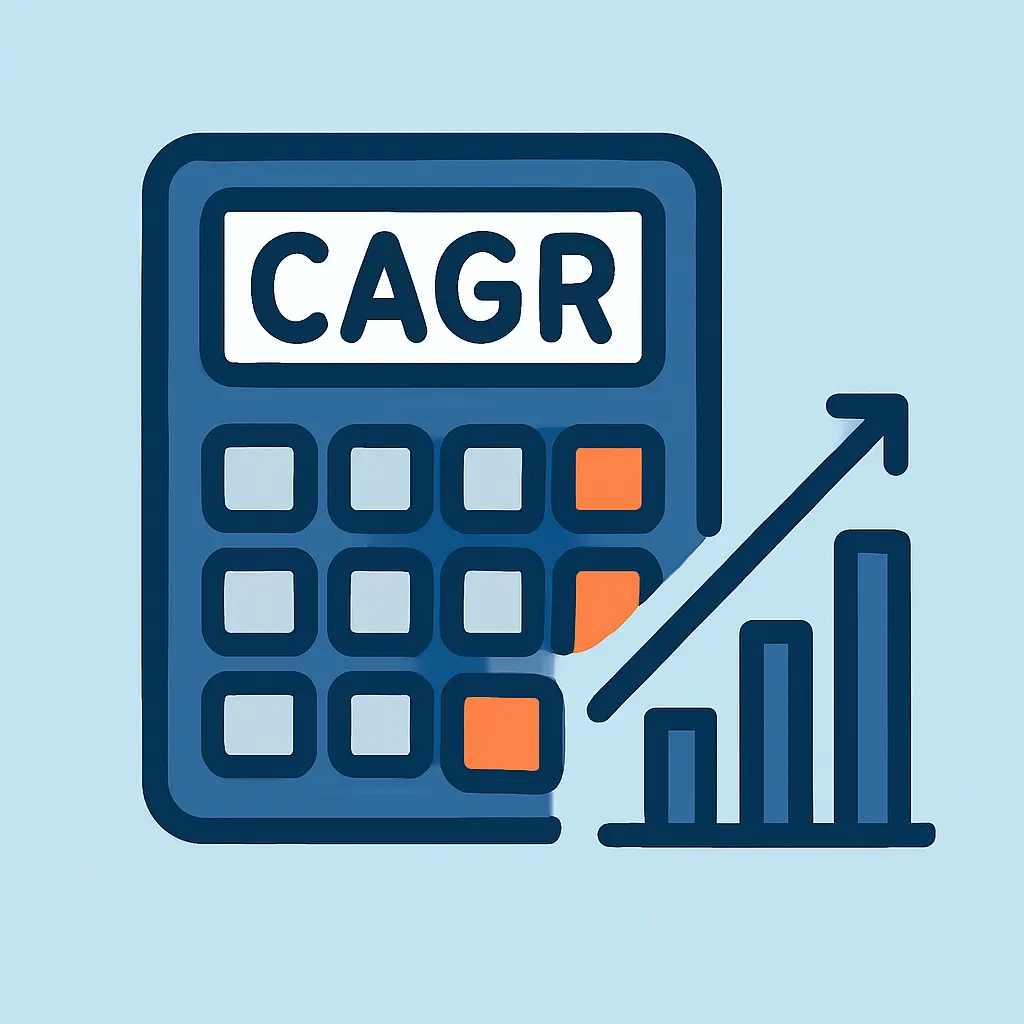

Introduction to Stock Valuation Metrics
When it comes to stock investing, valuation metrics help investors determine whether a stock is fairly priced, overvalued, or undervalued. Two of the most popular valuation tools are the Price-to-Earnings (PE) ratio and the Price/Earnings-to-Growth (PEG) ratio. While both are widely used, they serve different purposes and have distinct advantages.
In this comprehensive guide, we'll break down both ratios in simple terms, explain how to calculate them, provide practical examples, and help you understand which metric might be better for your investment strategy.
What is the PE Ratio?
The Price-to-Earnings (PE) ratio is one of the most fundamental and widely used stock valuation metrics. It tells you how much investors are willing to pay for each rupee of a company's earnings.
Example: If a company's stock is trading at ₹500 and its EPS is ₹25, then:
PE Ratio = ₹500 ÷ ₹25 = 20
This means investors are paying ₹20 for every ₹1 of the company's earnings.
Interpretation:
- High PE Ratio: Could indicate the stock is overvalued OR that investors expect high future growth
- Low PE Ratio: Could indicate the stock is undervalued OR that the company has growth problems
- Industry Comparison: PE ratios are most meaningful when comparing companies within the same industry
What is the PEG Ratio?
The Price/Earnings-to-Growth (PEG) ratio is an enhancement of the PE ratio that incorporates a company's earnings growth rate. It was popularized by legendary investor Peter Lynch.
Example: If a company has a PE ratio of 20 and its earnings are growing at 15% per year, then:
PEG Ratio = 20 ÷ 15 = 1.33
This gives you a more complete picture of valuation relative to growth.
Interpretation:
- PEG = 1: Considered fairly valued (PE matches growth rate)
- PEG < 1: Potentially undervalued (growth rate exceeds PE)
- PEG > 1: Potentially overvalued (PE exceeds growth rate)
Key Differences Between PE and PEG Ratios
| Aspect | PE Ratio | PEG Ratio |
|---|---|---|
| What it measures | Current valuation relative to current earnings | Valuation relative to earnings growth rate |
| Growth consideration | Does not consider growth | Explicitly considers earnings growth |
| Calculation complexity | Simple (Price ÷ EPS) | More complex (PE ÷ Growth Rate) |
| Best for | Mature, stable companies with predictable earnings | Growth companies with varying growth rates |
| Limitations | Can be misleading for high-growth or cyclical companies | Growth rate estimates may be inaccurate |
Practical Examples: PE vs PEG in Action
Example 1: Comparing Two Companies
Let's compare Company A and Company B:
Company A: Stock Price = ₹1000, EPS = ₹50, Earnings Growth = 10%
Company B: Stock Price = ₹800, EPS = ₹40, Earnings Growth = 25%
PE Ratio Calculation:
Company A: ₹1000 ÷ ₹50 = PE of 20
Company B: ₹800 ÷ ₹40 = PE of 20
Based on PE ratio alone, both companies appear equally valued.
PEG Ratio Calculation:
Company A: 20 ÷ 10 = PEG of 2.0
Company B: 20 ÷ 25 = PEG of 0.8
Analysis: Company B has a much lower PEG ratio, suggesting it might be a better value considering its higher growth rate.
Example 2: High PE, High Growth Company
Company C: A fast-growing tech company
Stock Price = ₹2000, EPS = ₹40, Earnings Growth = 50%
PE Ratio: ₹2000 ÷ ₹40 = 50 (appears expensive)
PEG Ratio: 50 ÷ 50 = 1.0 (fairly valued relative to growth)
Insight: While the PE ratio of 50 might scare away some investors, the PEG ratio of 1.0 suggests the stock is fairly priced given its exceptional growth.
When to Use PE Ratio vs PEG Ratio
- Comparing companies within the same industry
- Analyzing mature, stable businesses
- Looking for quick valuation screening
- Companies have similar growth profiles
- Comparing companies with different growth rates
- Analyzing growth stocks
- You want a more complete valuation picture
- Future growth potential is a key consideration
Which is Better for Stock Selection?
💡 The Verdict: It Depends on Your Investment Strategy
There's no one-size-fits-all answer to whether PE or PEG ratio is better. The choice depends on your investment style, the type of companies you're analyzing, and your risk tolerance.
For Value Investors
PE ratio might be more useful for traditional value investors who focus on established companies with stable earnings and look for stocks trading at low multiples.
For Growth Investors
PEG ratio is often preferred by growth investors who are willing to pay higher multiples for companies with strong growth prospects. The PEG ratio helps identify growth companies that might be reasonably priced despite high PE ratios.
For Balanced Approach
Use both ratios together for a more comprehensive analysis. The PE ratio gives you a snapshot of current valuation, while the PEG ratio provides context about future growth potential.
Pro Tip: Many successful investors use the PEG ratio as a secondary check after screening with PE ratio. This helps avoid missing great growth companies that might appear expensive based on PE alone.
Limitations and Considerations
⚠️ Important Caveats for Both Ratios
PE Ratio Limitations:
- Doesn't account for different growth rates between companies
- Can be distorted by one-time earnings events
- Less useful for companies with negative or volatile earnings
- Different accounting methods can affect comparability
PEG Ratio Limitations:
- Relies on estimated future growth rates, which may be inaccurate
- Different timeframes for growth projections can affect comparability
- Less reliable for companies with very high or negative growth rates
- Doesn't consider other important factors like debt, competitive position, or management quality
Practical Investment Strategy
Step-by-Step Approach to Using Both Ratios
- Start with PE screening: Filter stocks with reasonable PE ratios relative to their industry
- Apply PEG analysis: For companies that pass the PE screen, calculate PEG ratios to account for growth
- Compare within sectors: Always compare ratios with similar companies in the same industry
- Consider other factors: Don't rely solely on valuation ratios - analyze fundamentals, competitive advantages, and management quality
- Monitor changes: Regularly update your analysis as earnings and growth projections change
Real-World Case Study: IT Sector Comparison
| Company | Stock Price | EPS | PE Ratio | Growth Rate | PEG Ratio | Verdict |
|---|---|---|---|---|---|---|
| Infosys | ₹1,500 | ₹60 | 25 | 12% | 2.08 | Appears expensive |
| TCS | ₹3,200 | ₹120 | 26.7 | 15% | 1.78 | Fairly valued |
| Wipro | ₹400 | ₹22 | 18.2 | 8% | 2.28 | Expensive relative to growth |
| HCL Tech | ₹1,100 | ₹55 | 20 | 18% | 1.11 | Reasonable valuation |
💡 Key Takeaways
- PE ratio is simpler but doesn't account for growth
- PEG ratio provides a more complete picture by incorporating growth
- Neither ratio should be used in isolation - always consider other factors
- The "better" ratio depends on your investment style and the type of company
- For most investors, using both ratios together provides the best insight
Disclaimer
This article is for educational purposes only and should not be considered as financial advice. Always conduct your own research and consult with a qualified financial advisor before making investment decisions. Past performance is not indicative of future results.
